
The root of the LA Fires is, ironically, in its prohibition.
In an effort to stamp out Indigenous peoples and practices, California banned intentional burning in 1850, within the last four months of the year it became a state (September 9th, 1850). “Intentional burning” was an evasive definition to outlaw cultural burning by Native Americans – members of Indigenous communities were legally shot at for burning as late as the 1930’s, to ‘preserve’ timber supplies until the government and large-scale investors could get ahold of their lands.
The purpose of these controlled fires, or prescribed burns as defined when non-Indigenous communities take part, is to reduce dry vegetation to manage how much available plant matter a fire can travel through. The result is rejuvenated soil, increased biodiversity and tree health, a slower spread of pests and disease, and fewer ladder fuels, which can bring lower-scale fires from the ground to a forest’s canopy.
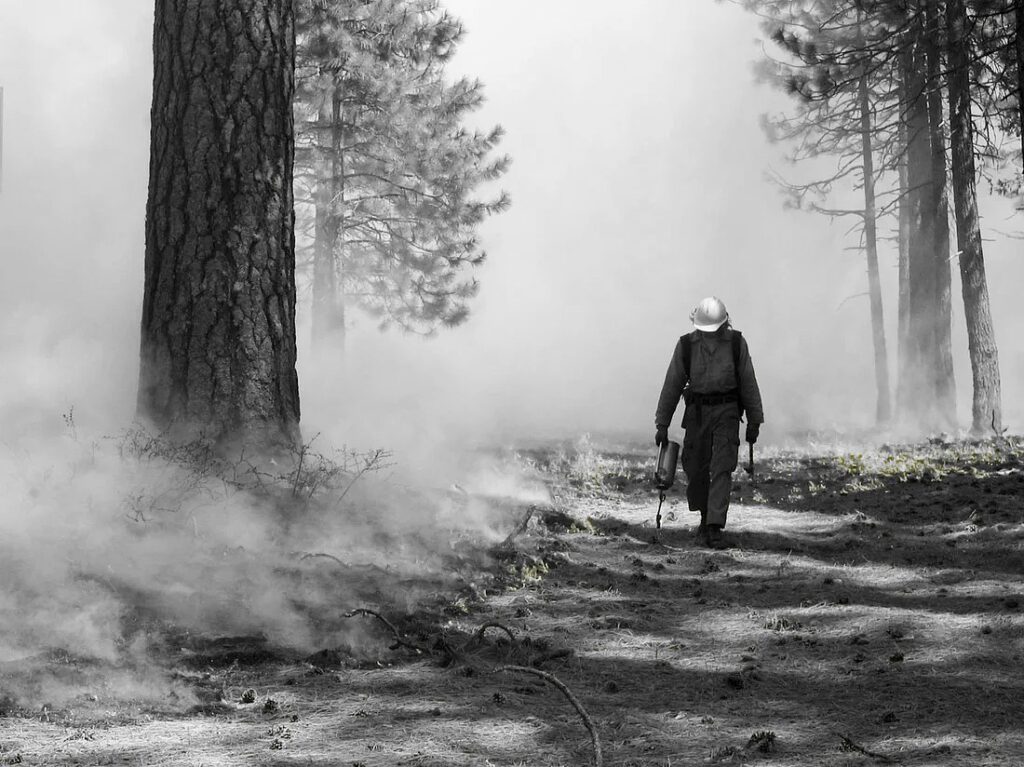
Prescribed burns have been utilized more and more over the recent years in California and the LA Forest, though the U.S. Forest Service issued a state-wide halt on all controlled burns this last October. Critics say that controlled burnings in chaparral (shrubland) regions, such as those in the Pacific Palisades where the first of the LA fires ignited, are hard to manage, may increase erosion & mudslides on slopes (where much of the affected areas were located), and would have had little to do with the spread of fire once reaching a neighborhood, where houses in rows and trees are enough to conduct a large blaze. However, chaparral ecosystems depend on periodic fires to regenerate, and the older these shrubs become, the more flammable they are.
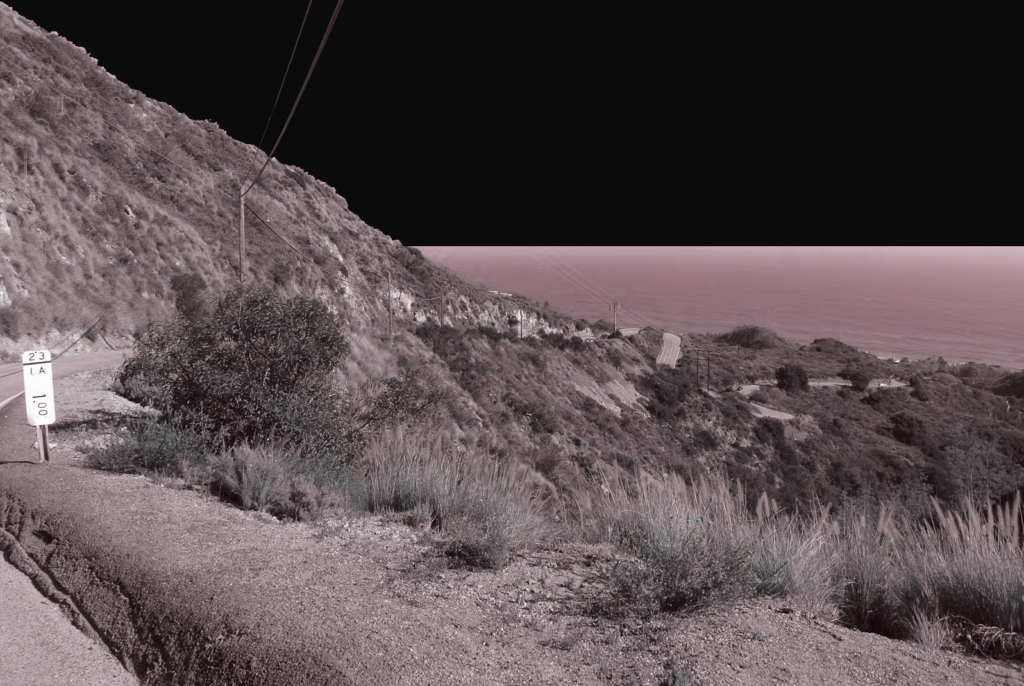
California is not just fire-adapted, it is fire dependent. Despite being sovereign nations, tribes must currently seek permission from the state to light a fire. This not only strains our resources and limits our ability to burn when conditions are right — a window that is very small and shrinking — but violates tribal sovereignty. Sovereign tribal nations should not have to ask a state for permission to exercise our culture. For far too long, the wisdom of our ancestors has been ignored, ridiculed and criminalized.
Russell Attebery, chairman of the Karuk Tribe, for CalMatters in 2024.
To say that ceremonial burnings would have saved the Palisades is too grand of a judgment to make. Southern California is a fire-prone habitat to begin with, and no levels of precautions or interference in nature can change this. But what can be derived is that a detachment in building with/around our lands (including continuing to conserve invasive species!), and a failure to trim, reorganize, and apply prescribed burnings to other densely vegetated areas that sparked up neighborhoods, are very prominent factors in this man-made disaster (this is not natural when urbanization and global warming are to blame).

January fires have sprouted not only in Los Angeles, subjecting LA County and the rest of Socal to over 12,000 buildings worth of breathable asbestos and chemical compounds in water sources, but across San Diego and the Inland Empire. After an extensive wet season between heavy droughts in early 2024 and the government halt on controlled burning during the last safe time of the year they could have been executed, Southern California entered 2025 with an overabundance of natural firestarters, despite fire season historically taking place during the early to late summer months. However, the difference between what is happening in Los Angeles and other areas was the most recent Santa Ana windstorm, beginning to gust from 80-100 miles an hour during the fire-starting event in the Palisades Tuesday morning.
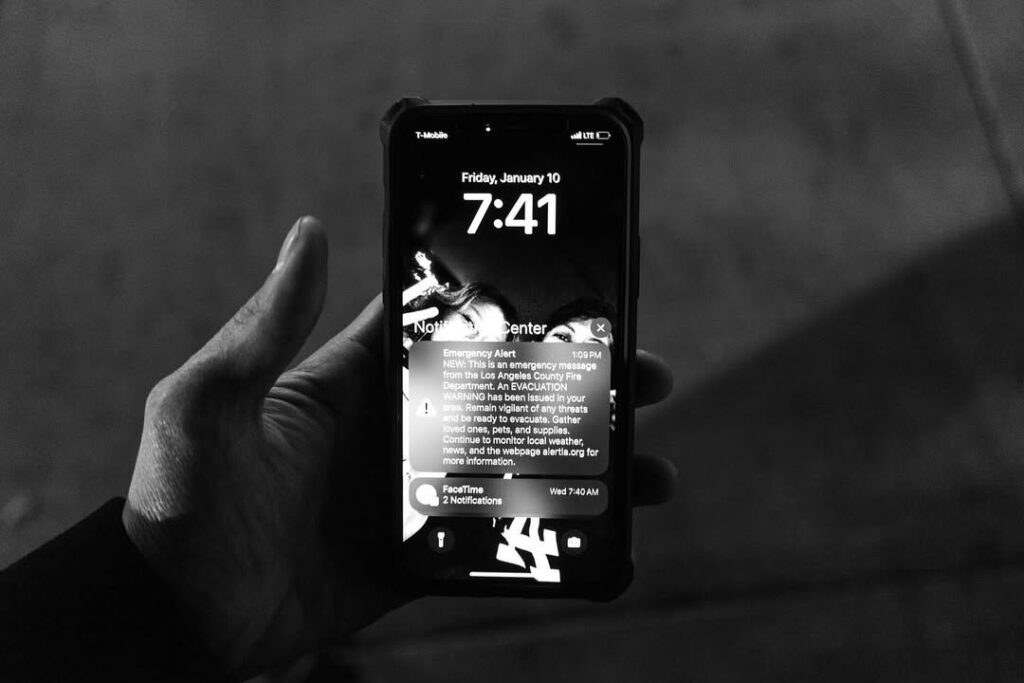
Coincidentally this was a right-place, right-time happening that could have occurred anywhere the Santa Ana winds hit (almost all of Socal). Neighboring counties were on high alert after being notified about the LA fire outbreak, and have been actively neutralizing any simultaneous threats. But further North in Yosemite Valley, preventative measures after previous wildfires have been taking place under the guidance and direction of Indigenous elders:
Two hundred years ago, someone walking through Yosemite would not have seen the densely packed forests we now associate with the Sierra Nevada. They would have passed through broad meadows and perhaps have even been drawn to comment, as the Spanish did, on how the land appeared like a ‘well-tended garden.’ In fact, that is exactly what Spaniards were seeing: Indigenous people native to Yosemite and other parts of the world for millennia have used fire to promote healthy forests. Today, the wisdom of that approach is seen as one of the keys to unraveling the deadly cycle of California wildfires.
Robyn Schelenz, editor for University of California in 2022.
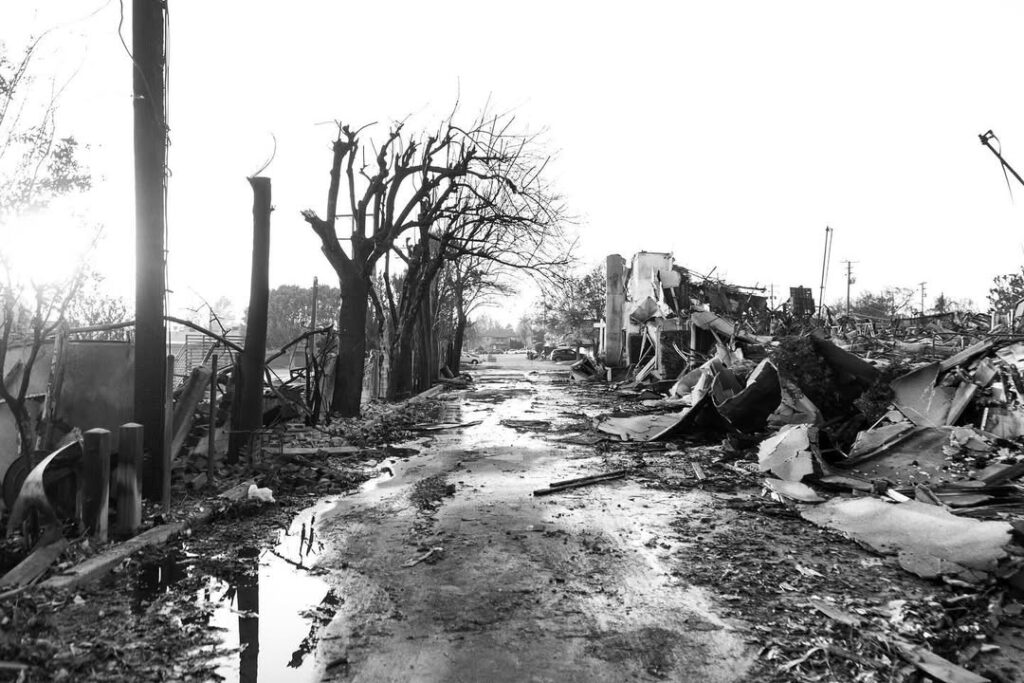
When the Indian was on the land, the canopy was 40 percent or less open. Many of the bushes we’re burning now haven’t actually been burned for about one-hundred-and-twenty years. And they’re crying. They want fire, they want to be restored.
Ron W. Goode, chairman of the North Fork Mono Tribe for University of California in 2022.
Now, Yosemite’s terrain is, as expected, different from what you’d find in Southern California, but it’d be ignorant not to take cues from other communities in the state having gone through similar events. Even in San Bernardino last year, burn scars from previous prescribed fires were enough to slow down The Line Fire before it hit the Angelus Oaks community.
A disconnect from the natural world, coupled with LAFD budget cuts/fund reassignment signed off by Mayor Karen Bass, and outdated above-ground power lines (thought to be a main factor in the Sunset fire’s outbreak earlier this week, destroying almost 50 acres of West Hollywood), stirred a recipe for disaster leaving hundreds of thousands of Angelenos displaced after major fire insurance cancellations since 2020 through 2024. And over 900 of the men & women clearing debris and dampening flames on the frontlines are currently incarcerated, only getting paid $5.80-$10.24 a day, despite working 48-hour shifts and being at a much higher risk for injury and death compared to firefighting career professionals.
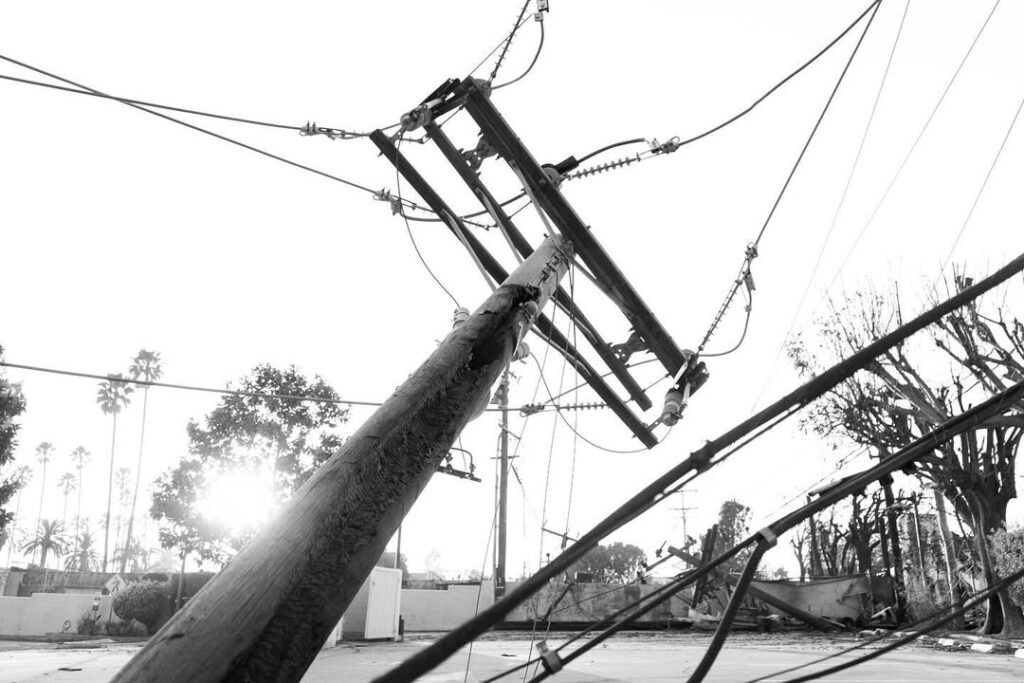
So with prisoners risking their lives on the front line, how are other law enforcement agencies helping?
For starters, Immigration and Customs Enforcement (ICE) has begun establishing checkpoints and raiding communities across California. Since Tuesday, community watches on social media have posted warnings for undocumented folks in Pacoima, Commerce, Hollywood, Koreatown, Inglewood, Lakewood, Santa Ana, Long Beach, North Hills, Sylmar, Los Angeles, The Bay, Coachella, Riverside, South Central, Chula Vista, and more, with Border Patrol (technically a separate entity) arresting dozens throughout Bakersfield, Kern County, and Tulare County. This is all while Mexican firefighters are traveling North of the border to assist in containing the Los Angeles fires.
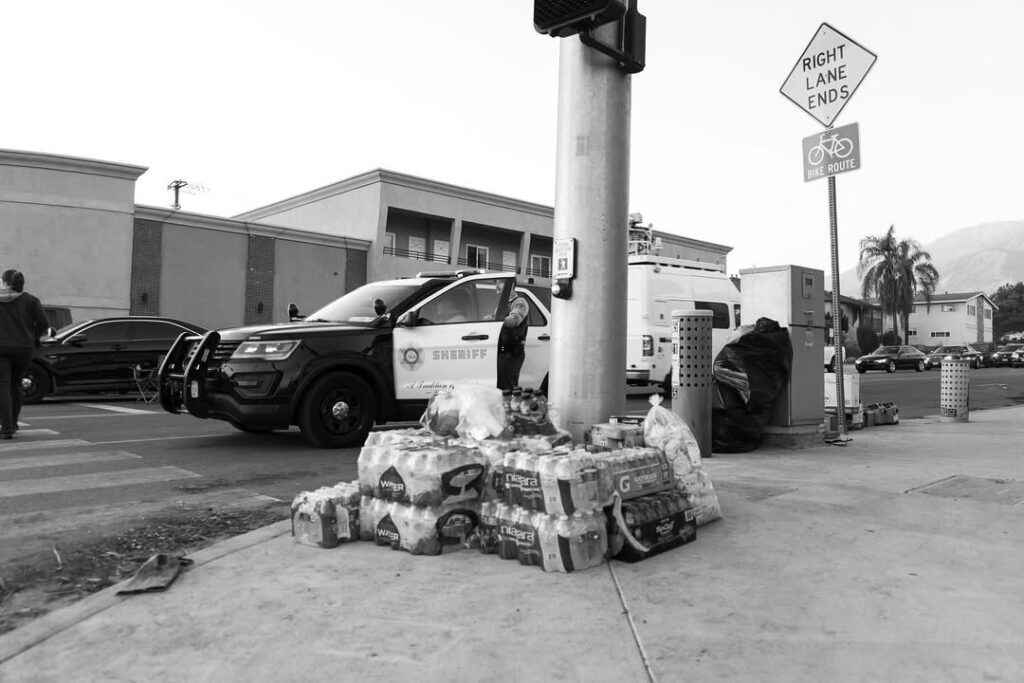
Meanwhile, the LAPD has directed efforts towards enforcing curfews around affected areas and arresting based on suspicion of looting… Looting what??? Chimneys??? That’s damn near all that’s left standing.
We understand securing perimeters for firefighting. You don’t have to blame the people for a situation you helped create.
Many community members, though acknowledging that theft does occur and should be dealt with accordingly, see the broadcasting of these actions as another attempt to justify a bloated budget, without acknowledging fault in preparing for, scouting for, and containing any fires during a notably dry brush season, especially when notified about the Santa Ana windstorm coming in the week prior.
Despite the circumstances, by far and beyond what Los Angeles has demonstrated to itself and the globe at large is a true meaning of the word community.
From the underground up, independent businesses, mutual aid collectives, and individuals have been the face of solidarity and help under grey skies and soot. Countless LA County residents have offered cars, housing, medical supplies, and food to our neighbors in need during this time, and several organizers have dropped all operations to collect and distribute supplies as needed.
// You can check our social media post of this article for organizers, resources, and ways to help or get help, curated by our community in the comments section. @deadrelativesmag //
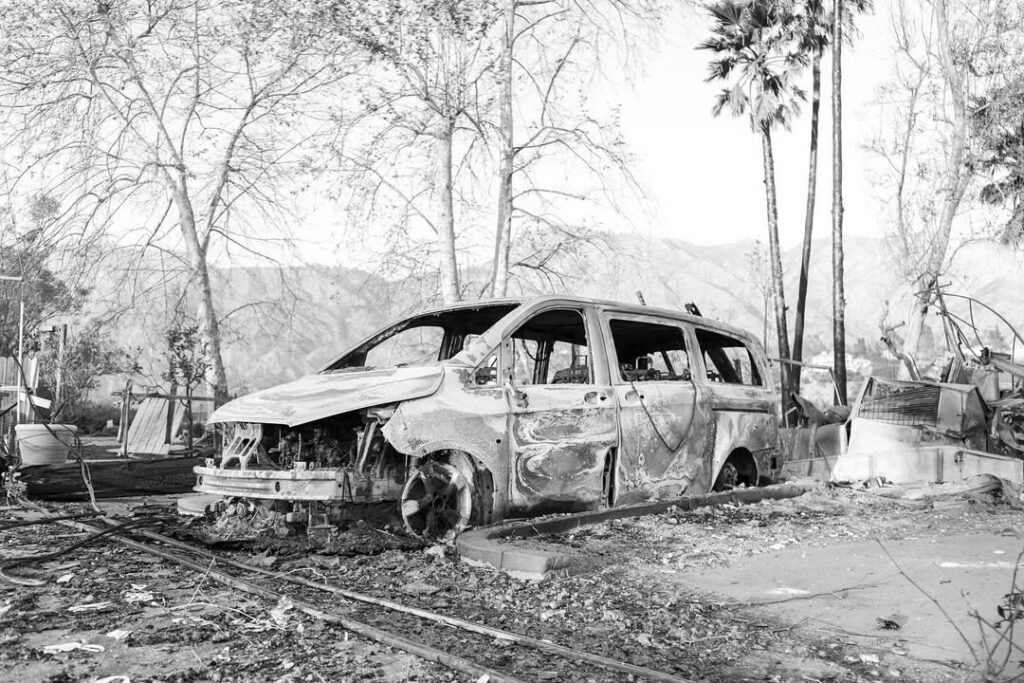
What does all this mean moving forward?
Los Angeles is set to host the 2028 Olympics and released a SmartLA City Strategy in late 2020, planning to technologically advance the infrastructure of the city. So far, everything’s been pretty on track – ironically, the end of 2024 was supposed to mark the end of installing environmental sensors to monitor for quality and natural disasters <lol>. Next up, to be completed by 2026, is the ‘building of public-private partnerships’ for an open-source smart device connection to infrastructure… Not to say that the destruction of entire neighborhoods by fire was to make way for a more integrated building plan, but it sure as hell makes it easier to establish blueprints for a total surveillance state, if that was somehow in the cards.
Reiterating that over 12,000 buildings worth (and counting!) of asbestos fibers and other nasty carcinogens have been released into the Southern California airstream and ocean, staying inside as much as possible and wearing a mask when outside are ideal to prevent long-term health effects and cancer. Don’t forget to switch your car’s airflow to keep outside air outside. Even wildfire vegetation smoke on its own can be detrimental to those with health defects. We do not know how long the chemicals released from extensive neighborhood burning will affect the Southern Californian population in the years to come, but if the fires didn’t kill you, long-term exposure will…
Are you with us yet?